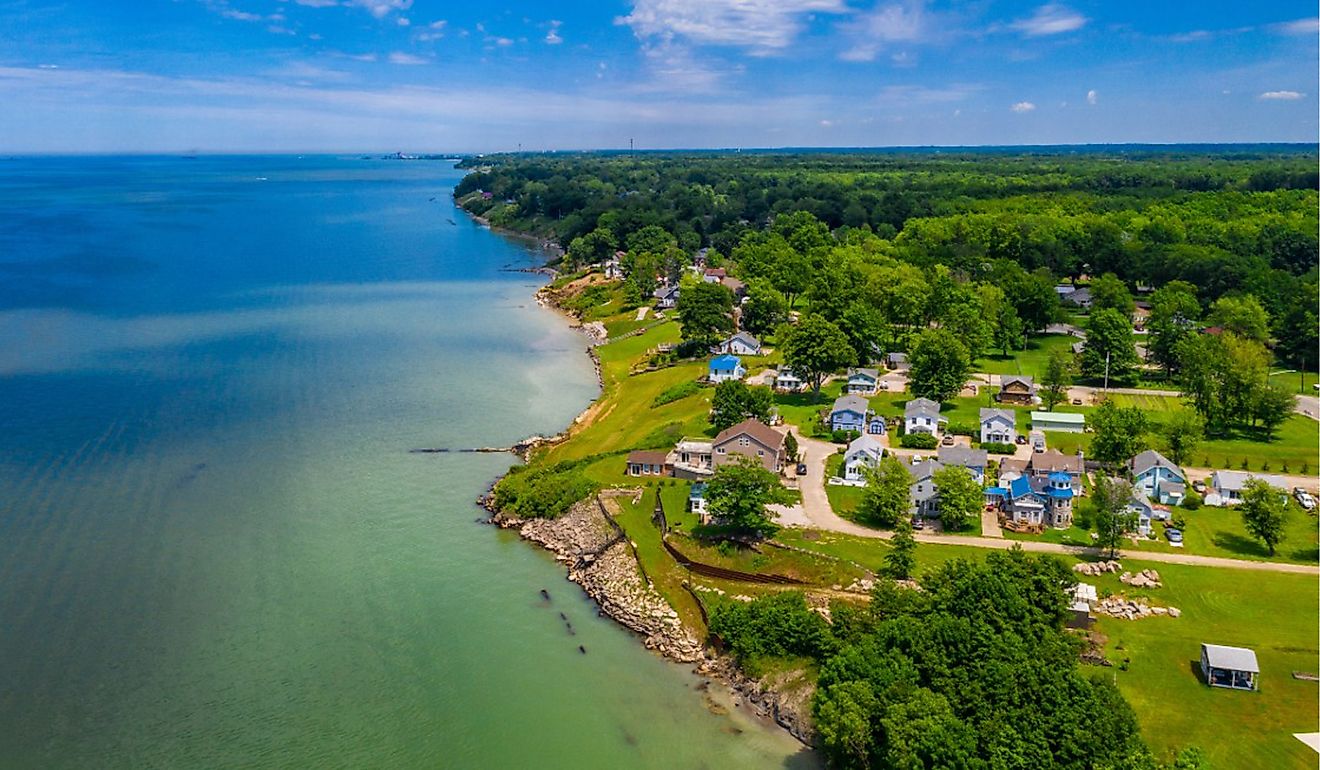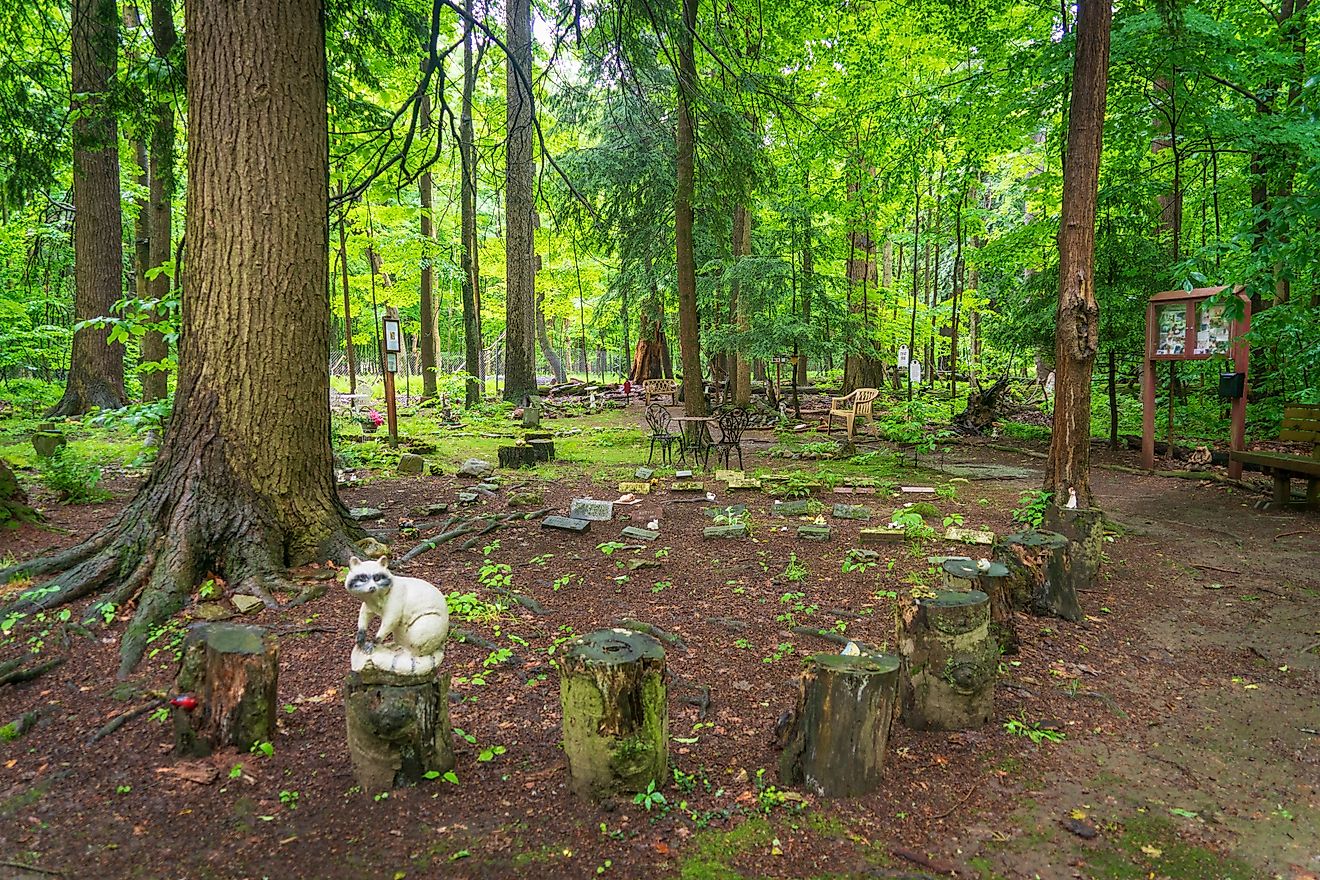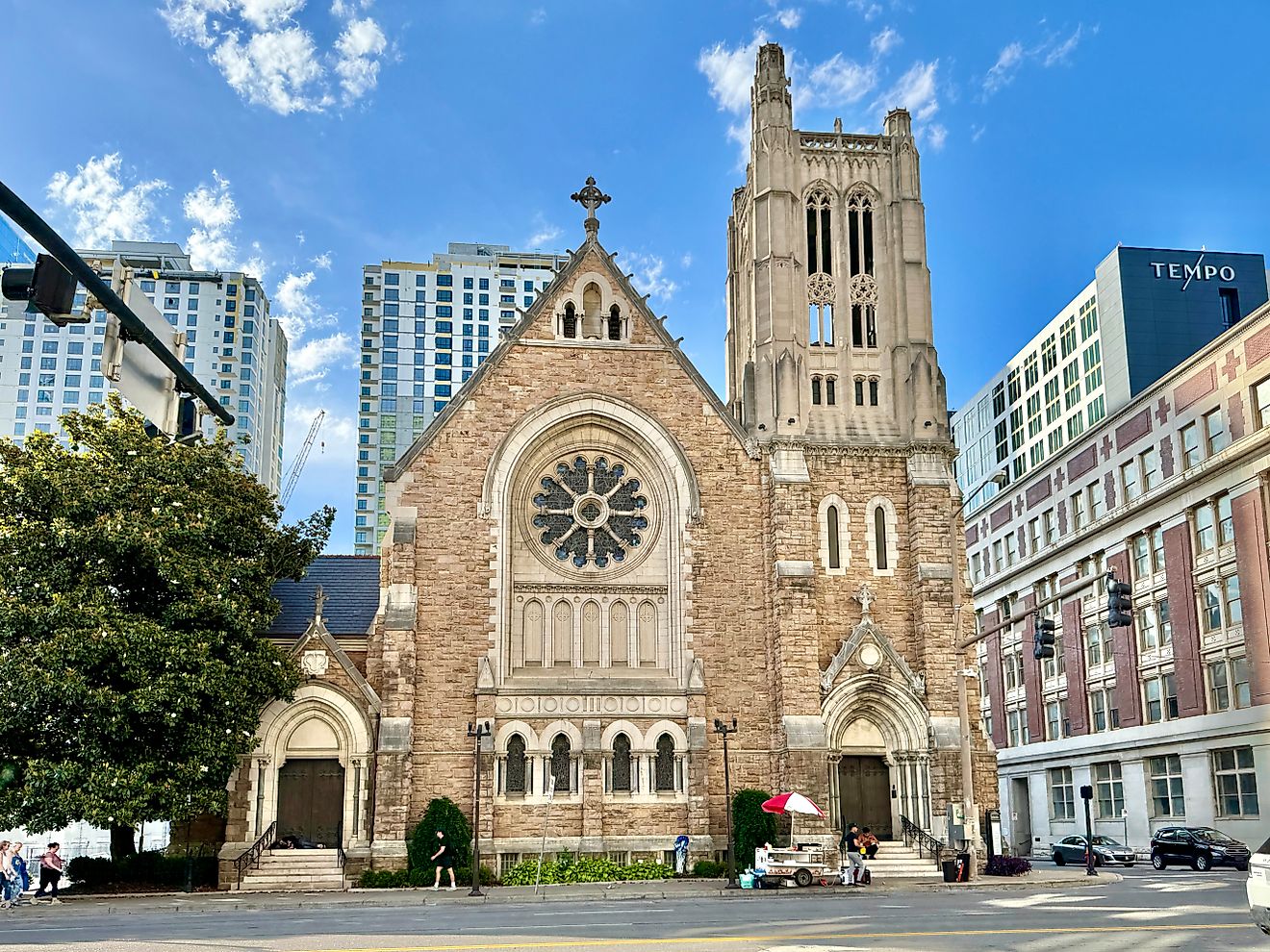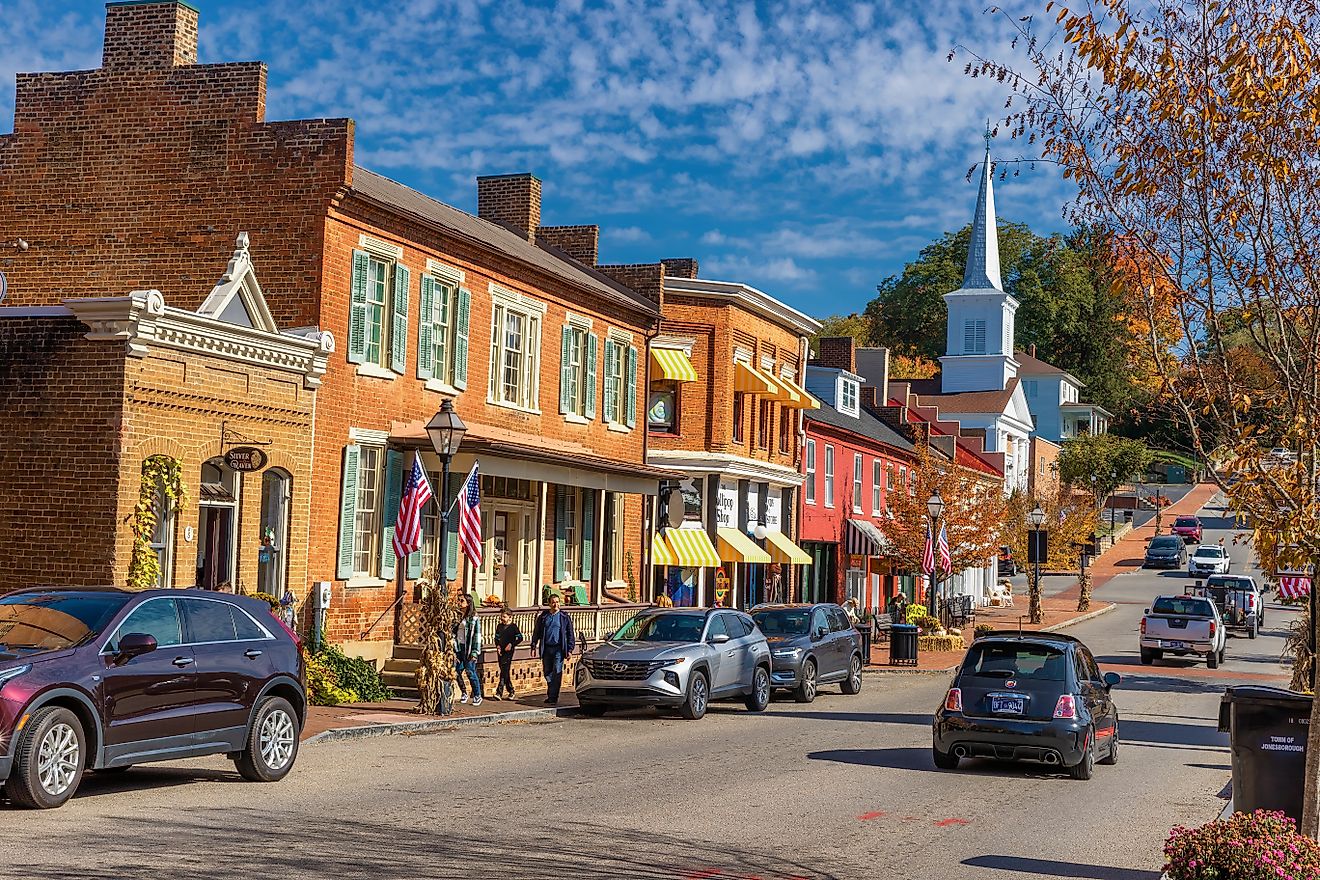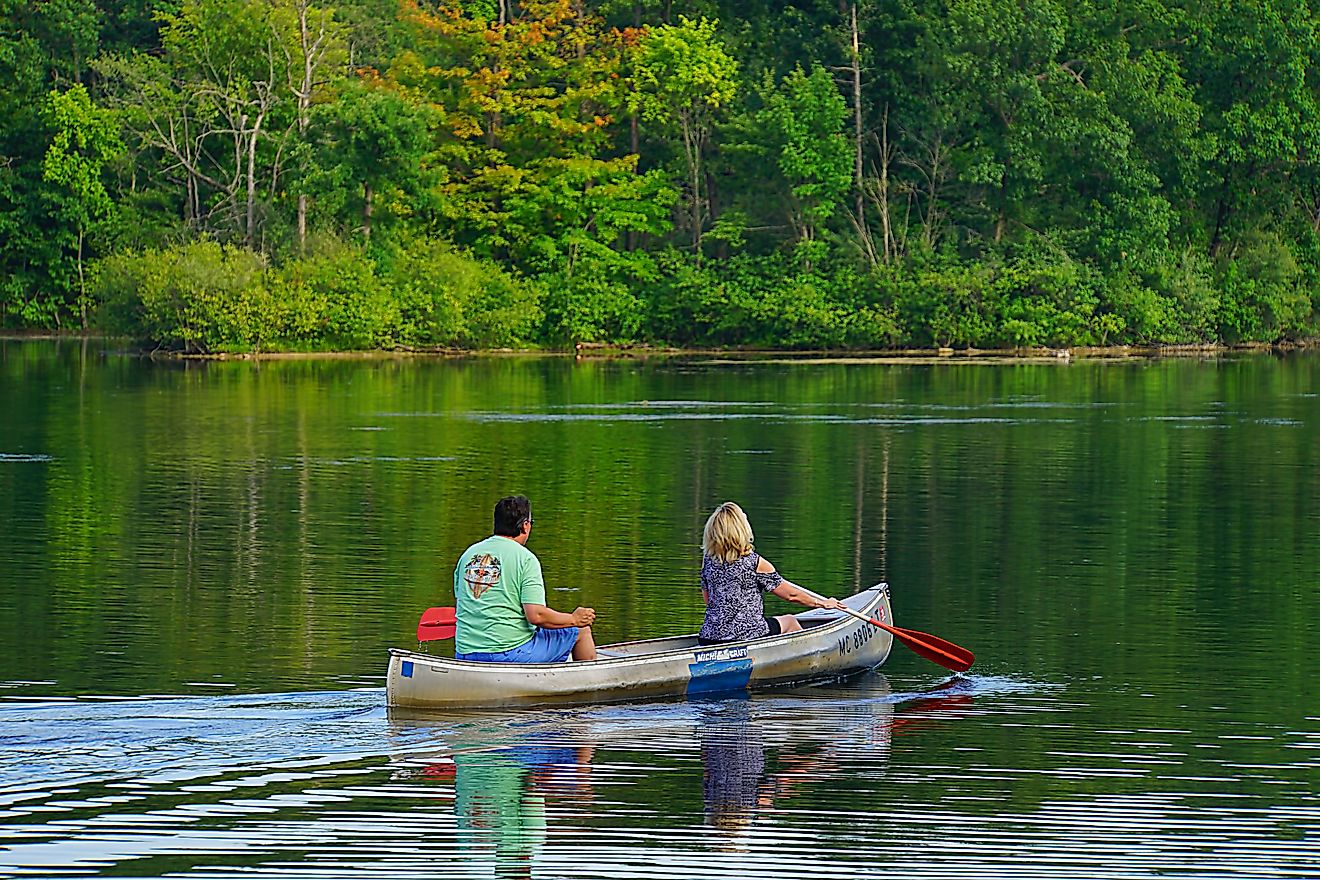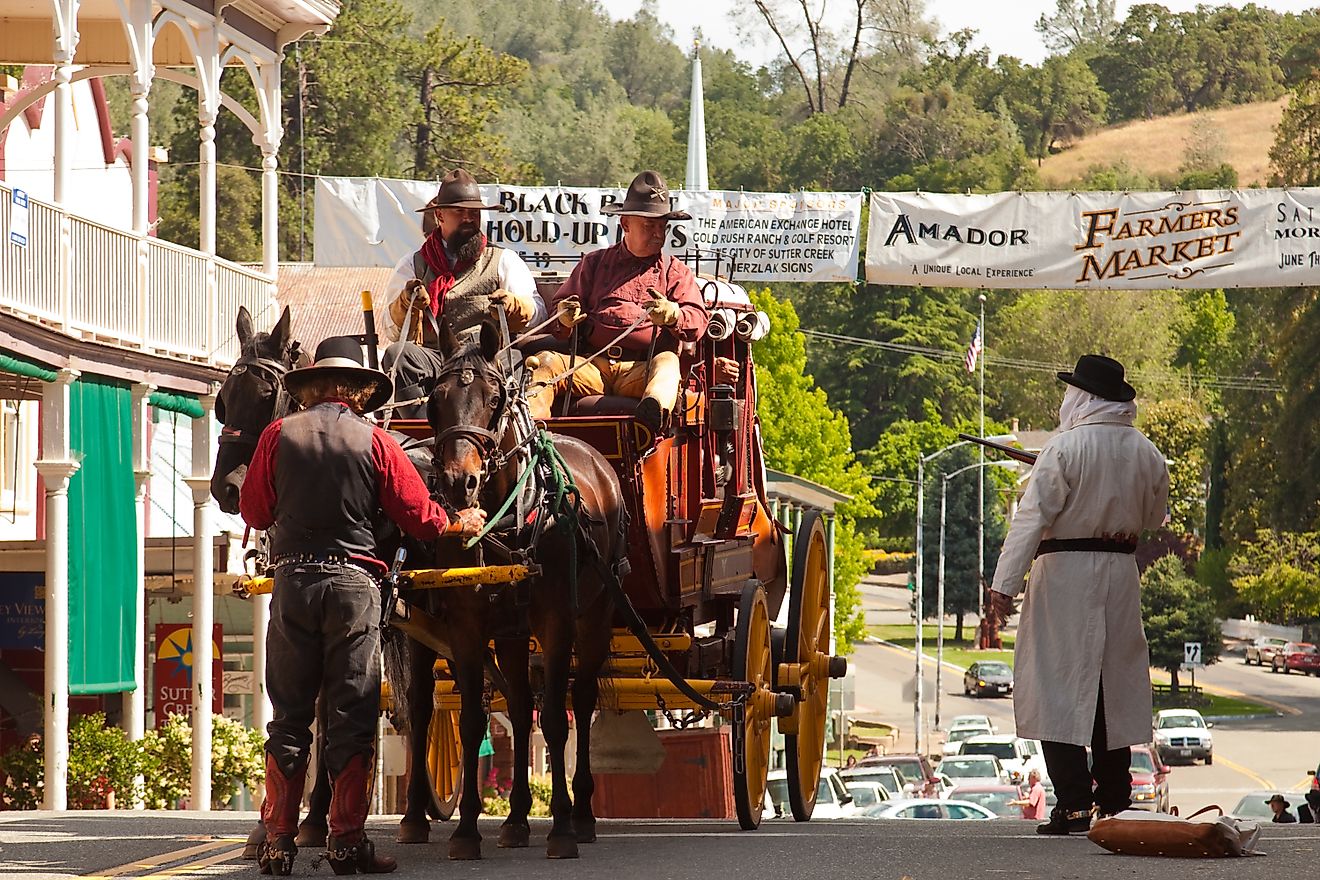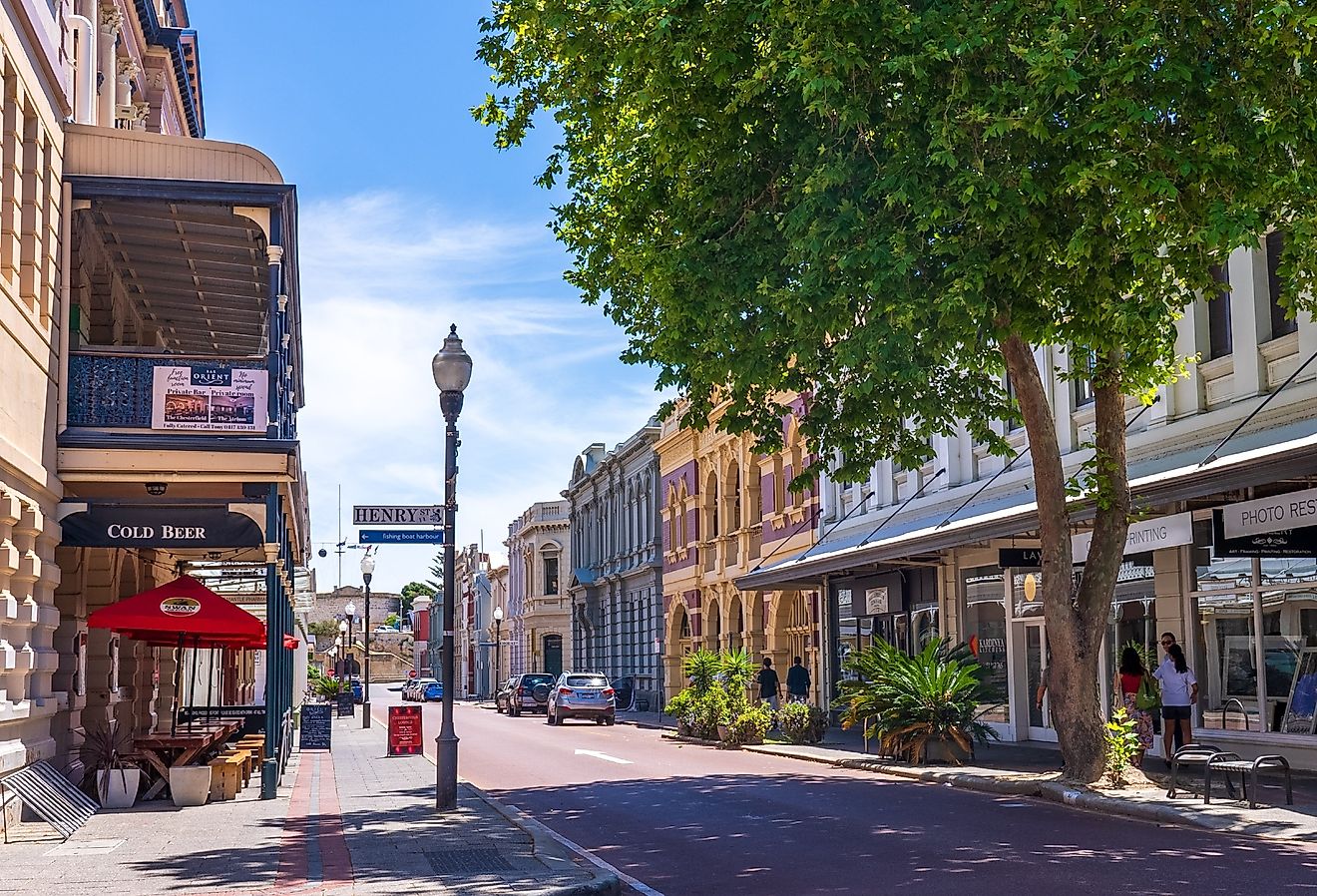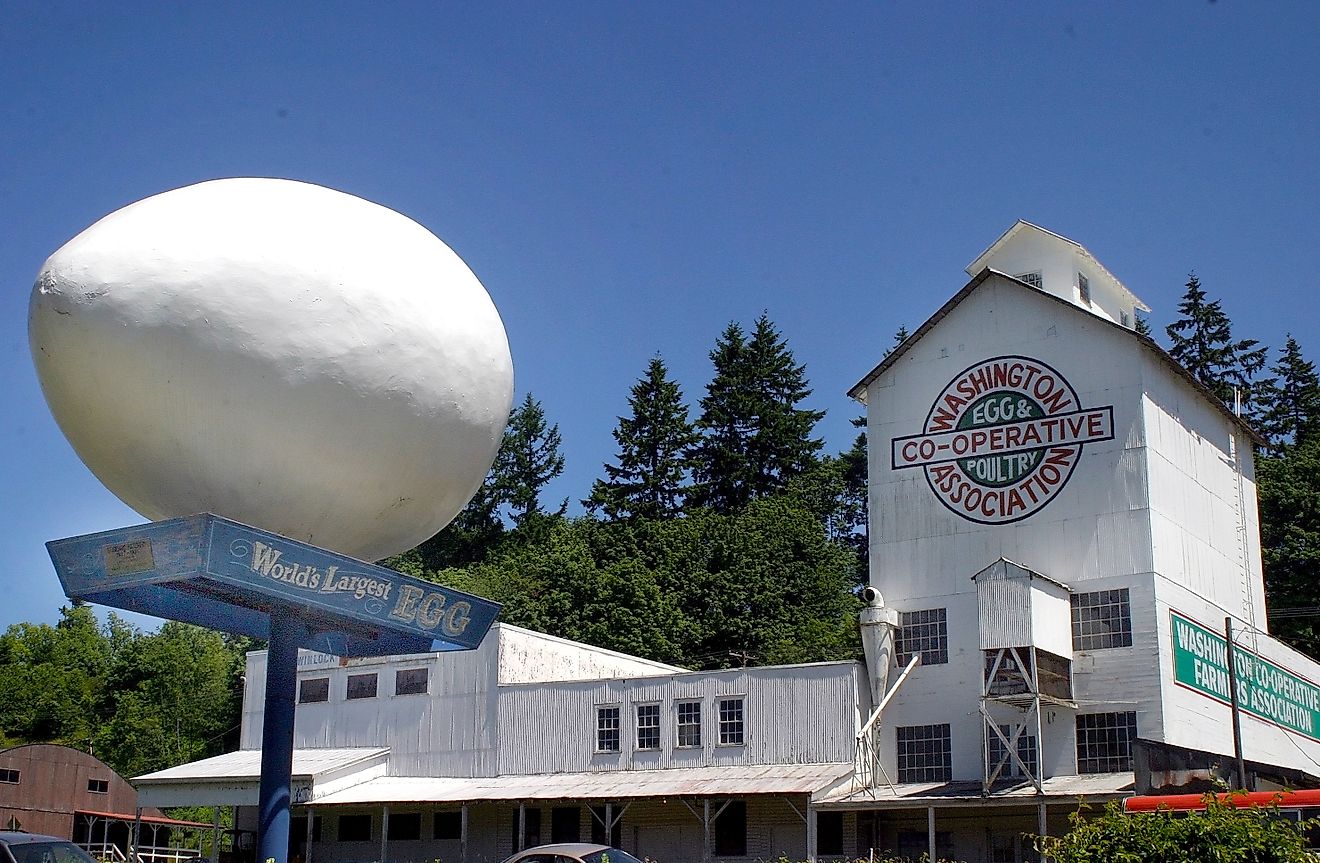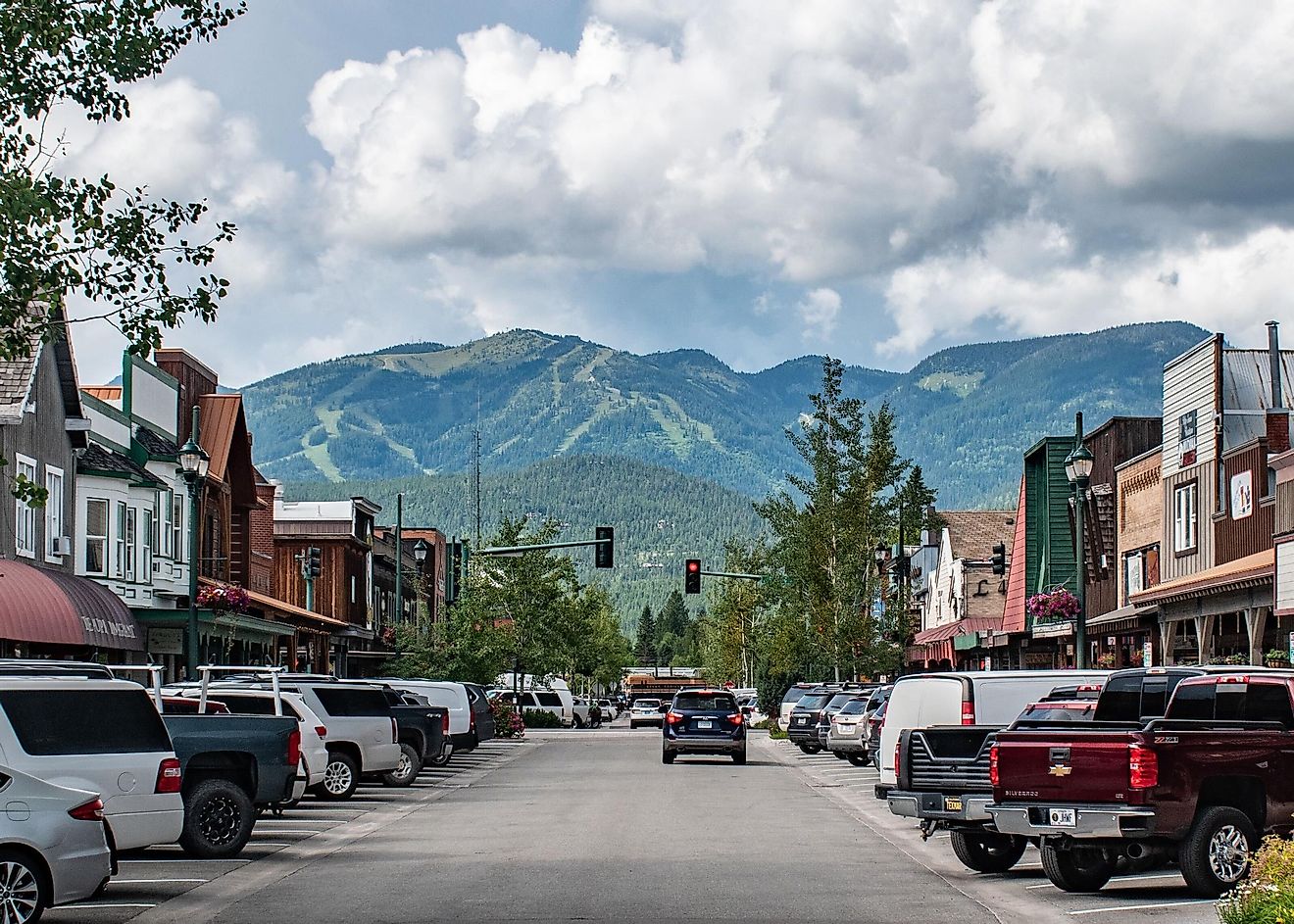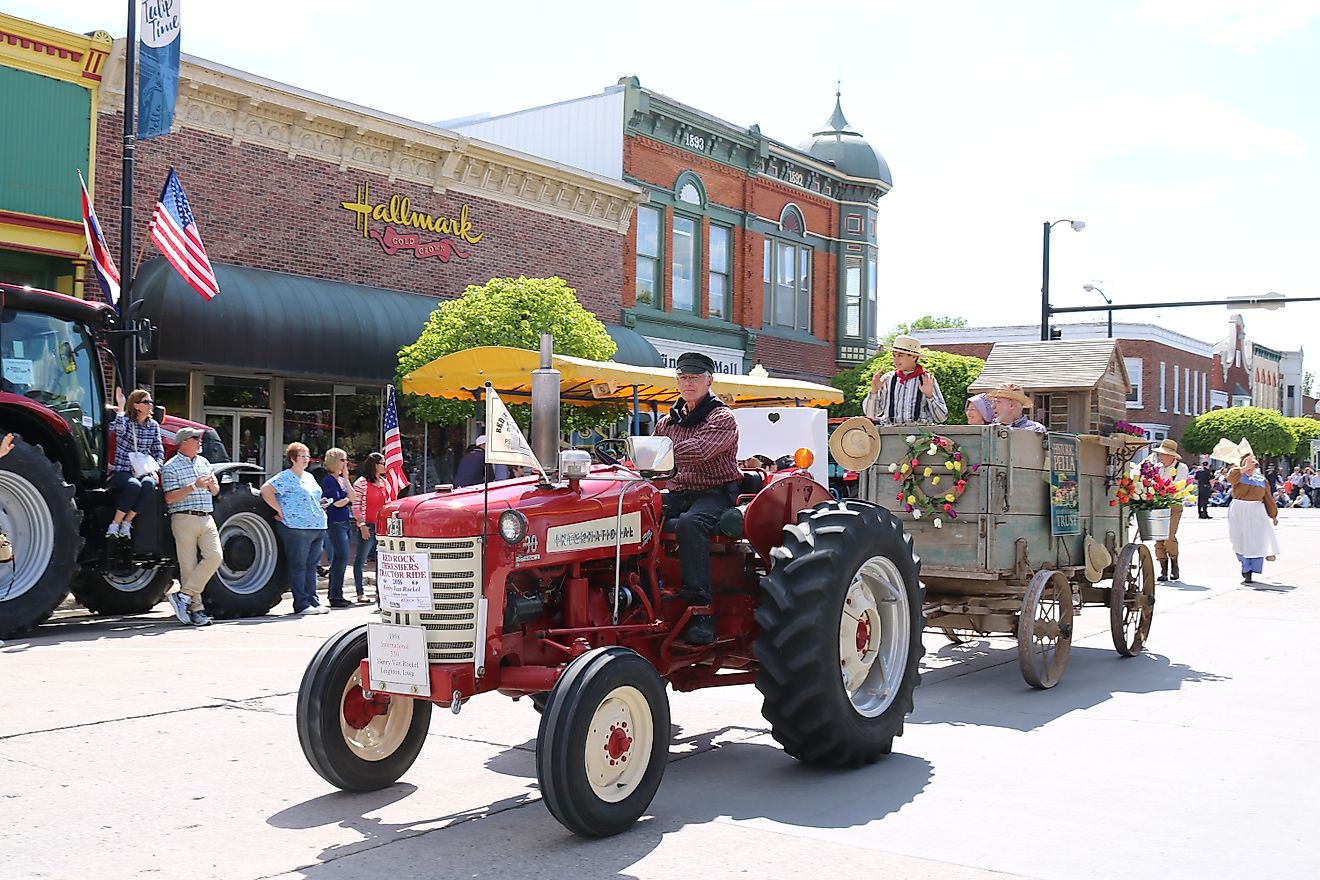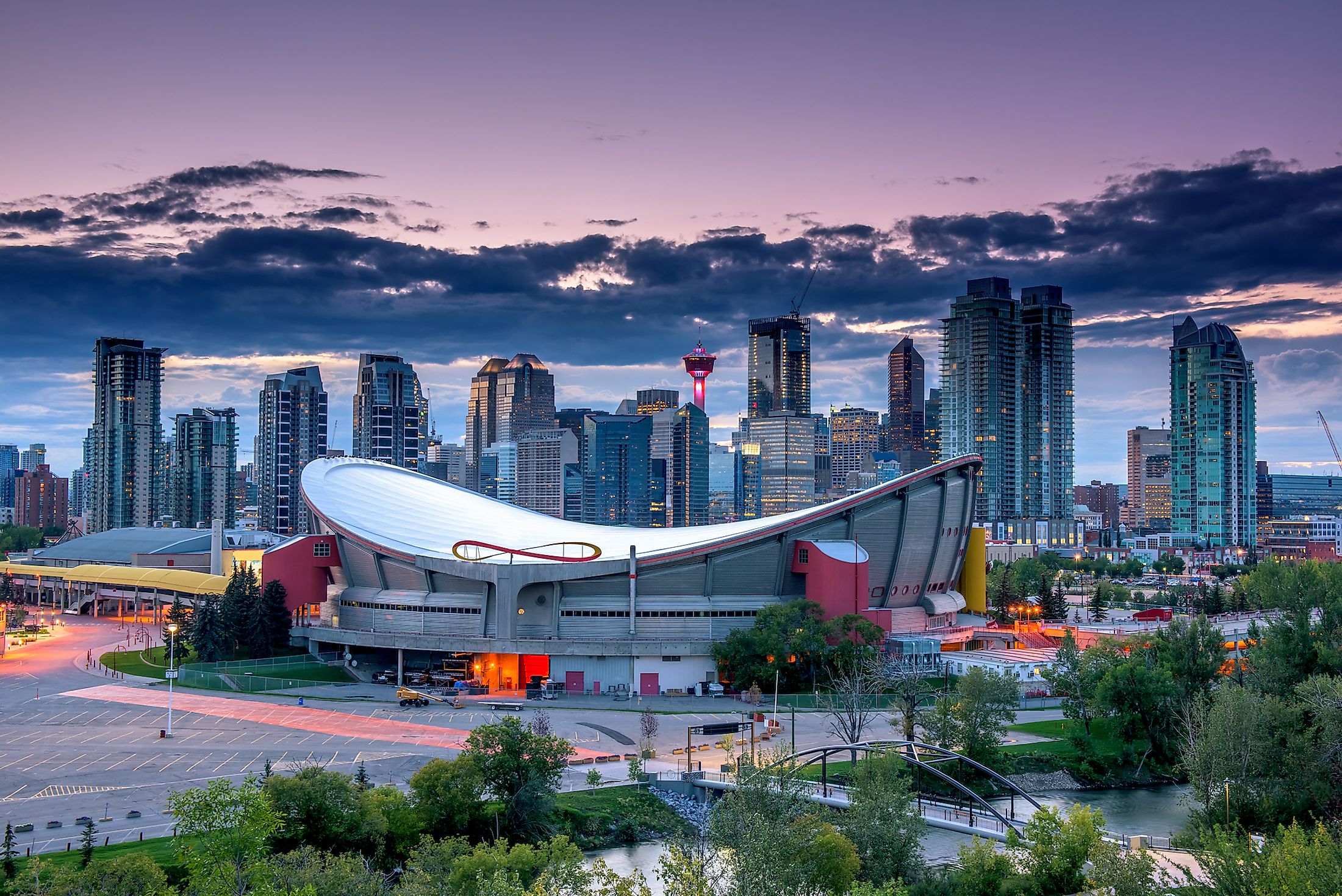
Calgary, Canada
Calgary is a city located in Southern Alberta, a province in Canada, and considered the 4th most populated city in the country. The modern cosmopolitan city still retains much of its traditional culture and is known for its exclusive history, annual events, and beautiful outdoor recreation. Besides, the relatively young Canadian city is the administrative and financial headquarters of the country's petroleum business. On the other hand, Calgary shows a significant connection to sports, where the city hosted the Winter Olympics back in 1988.
The Geography And Climate Of Calgary
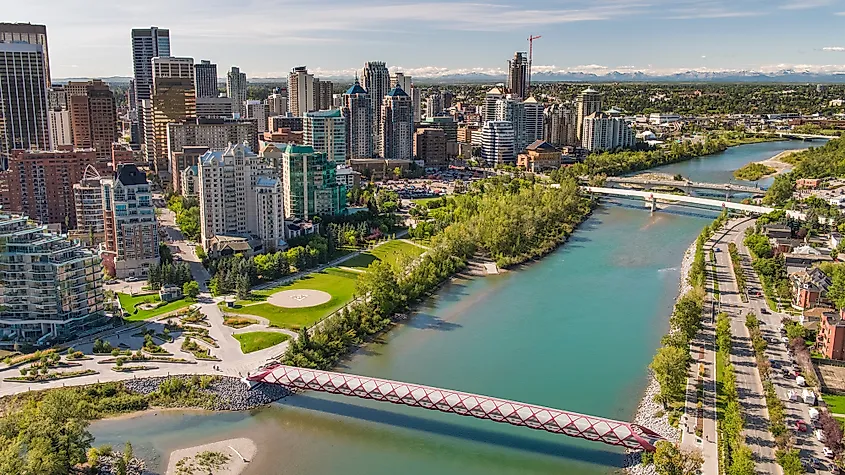
The location of Calgary distinguishes it from other cities in the Prairie Provinces. It is situated in the transition zone between the Canadian Rockies foothills, about 60 miles to the west, and the Canadian Prairies, lying within the foothills of the Parkland Natural Region and the Grasslands Natural Region. Calgary covers a total area of 327 square miles, with two rivers passing through it. The Bow River streams from the west to the south, and the Elbow River flows northwards from the south until it joins with the Bow River at Fort Calgary, close to the downtown. The city is encompassed by two municipal districts – the Municipal District of Foothills to the south and Rocky View County to the north, west, and east.
Calgary's climate is cold and temperate, with comfortably warm summers and long freezing, snowy winters. The weather is mostly sunny, even on the coldest days, with around 333 sunny days per year. Temperatures vary throughout the year between -11 °C and 24 °C, and they are rarely below -25 °C or above 30 °C. Tourists prefer to visit Calgary for warm-weather activities from early July to mid-August. Whereas December, January, and February mark the coldest temperatures of the year, keeping tourists away.
Brief History Of Calgary
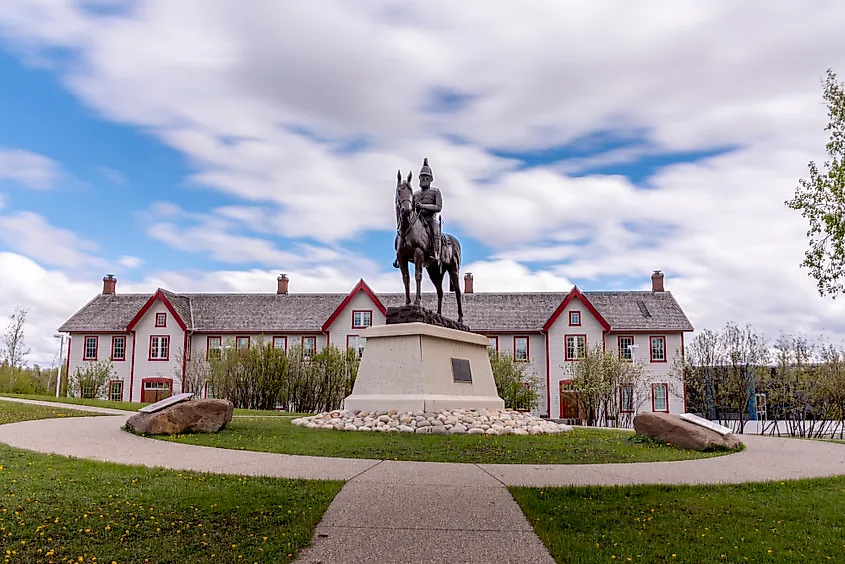
Calgary was settled in 1873, by the European settler John Glenn, after being inhabited by the Blackfoot, Blood, Peigan, and the Tsuu T'ina native tribes. The area became an address of the North-West Mounted, who were assigned in 1875 to protect the western plains from US whisky traders and to protect the fur trade. Originally named Fort Brisebois, after NWMP officer Éphrem-A. Brisebois; was then renamed Fort Calgary in 1876 by Colonel James Macleod, after Calgary on the Isle of Mull, Scotland. In 1877, a peace agreement was signed between the British and Canadian governments with several indigenous peoples, and the region quickly became a cattle-ranching border. Calgary was chartered as a town in 1884 and elected its first mayor, George Murdoch. It was incorporated as the city of Calgary in 1894.
Economy And Population Of Calgary
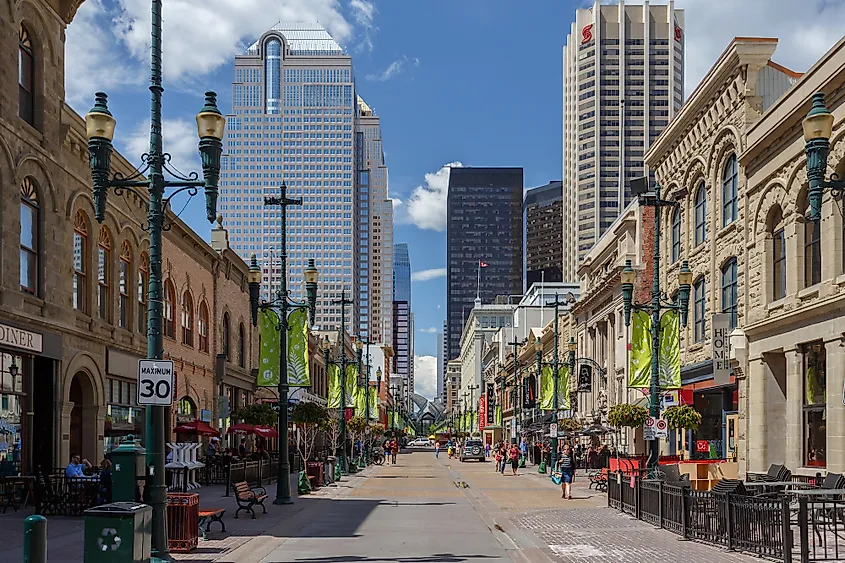
As the corporate hub of the petroleum industry with over 70% of Calgary's head offices in the energy sector, Calgary appeals to many related services, including banking, tourism, and transportation, with an active industrial sector that covers wood-processing, food and beverage, and electric machinery businesses. Calgary had originally been a farming town but was greatly expanded after the Canadian Pacific Railway was established, where the city became known as a "cow town" due to its connection to the livestock industry. Moreover, water preservation and management are a high priority in the region, where the Glenmore reservoir on the Elbow River helps as a source of freshwater. However, the growing demands on the water supply in this moderately dry belt of the Prairies have been an ongoing concern.
In another perspective, a recent study estimated that Calgary's average annual personal income is around $60,15. Calgary had the highest personal income in Canada and has maintained this status for well over a decade. Regarding taxes, Alberta – the province where Calgary is located- in the only Canadian province that doesn't apply a provincial sales tax. Goods and services undergo a federal 5% Goods and Services Tax only, whereas an annual income tax rate ranges between 25% and 38%, depending on the income bracket.
The population of Calgary is 1,239,220 residents, which makes Calgary the third-largest city in Canada, and the largest city in Alberta, with 28% of Calgarians being foreign-born.
Top Attractions In Calgary
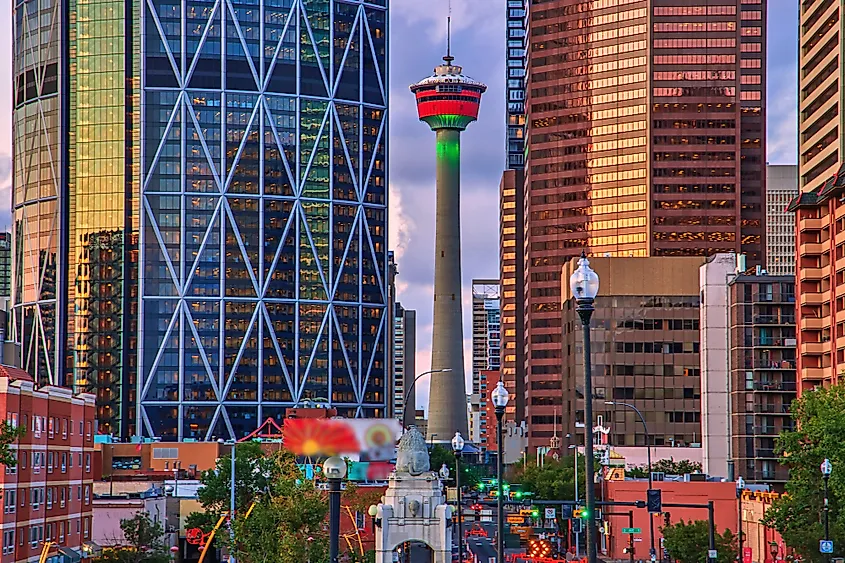
Calgary Tower: Built in 1968, The Calgary tower rises from the center of the downtown area, and is a must-see for any visitor. With its glass floor, and a birds-eye view of the busy streets below, the tower offers a 360° panoramic view of the bustling city, rolling foothills, and the majestic Rocky Mountains.
Fort Calgary: Fort Calgary is culturally and historically momentous. Situated at the joint of Bow and Elbow Rivers, the fort is a part of a huge, dynamic, and unfolding territory made through stories of indigenous peoples. These different and diverse worldviews and communities have developed here over thousands of years and are still active today.
In addition to the mentioned iconic Calgary attractions, the city is home to a wide selection of museums with different concepts, like the Military Museum, The Hangar Flight Museum, and Canada's Sports Hall of Fame. Moreover, Calgary offers a list of entertainment and educational sites like the Calgary Zoo, the Calaway park, and Telus Park Science Center. The city hosts major seasonal festivals and sports events along with all those attractions.
Calgary offers an atmosphere of a large metropolitan city with a heartfelt and friendly spirit of a connected community. It was once classified as the most livable city in North America and the 5th most livable city globally by the Economist Intelligence Unit due to its diverse communities and endless opportunities.
